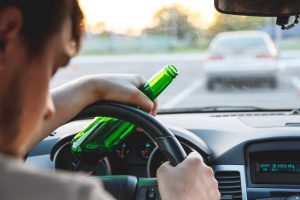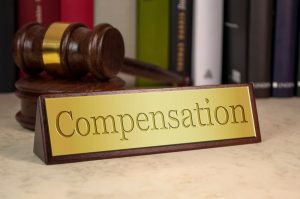Driving Under the Influence of Alcohol or Drugs
Driving under the influence can cause serious harm. If you were involved in a car accident, you might wonder how to cover the costs of medical treatment and damage to your vehicle. New York is a “no-fault” state. This means that if you are involved in an accident, you can file a claim with your insurer, regardless of who is to blame. You could receive full payment for your medical bills and lost wages. However, if the other driver was drunk or impaired, and you want to recover fair compensation for your injuries, you will need the assistance of the attorneys from Hach & Rose, LLP. Call us at (212) 779-0057 if you have been in an accident and believe the other driver was under the influence. Or contact us online. We will fight for your rights while you focus on recovering from the crash.
DWI and Impaired Driving in New York

New York law defines drunk driving as operating a motor vehicle with a blood alcohol content (BAC) of over .08% or higher. There is no legal limit for any narcotic without a medical prescription. Anyone involved in an accident determined to be under the influence of drugs or alcohol can expect to suffer serious civil and criminal penalties. These include loss of license, fines, jail time, and punitive damages in civil court.
Unfortunately, people still get behind the wheel after “just a couple of drinks.” Most people fail to realize how even minimal alcohol can affect their ability to function properly. When operating a car at a high rate of speed, the consequences can be dire, even fatal.
All drivers should note the following facts if considering driving after drinking:
- A “drink” is typically considered one 12-oz. beer, a 5-oz. glass of wine, or a 1 ½ oz. shot of liquor. Two “drinks” equals .02% BAC in an average person.
- At .02% BAC, you will already be experiencing a loss of judgment, a change in mood, and an inability to multitask.
- At .05% BAC (about three drinks), you will start having vision problems, slowed emergency response, and reduced coordination. These effects can be catastrophic when you are driving.
- At .08% BAC (four drinks and the legal limit for intoxication), you will experience loss of control, impaired perception, reduced ability to concentrate, and short-term memory loss. Even before this point, driving shouldn’t be an option.
- Above .10% (five or more drinks), reaction time deteriorates, visual acuity and balance are impaired, and perception becomes altered. At this level or above, it is not possible to drive safely.
The biggest factor in drunk driving accidents is the slowed reaction time. A BAC of .08% will slow your reaction with the brakes by one-tenth of a second. This tiny fraction of a second equals 12 extra feet when traveling 70 miles per hour. That’s more than enough to cause a devastating accident.
The other major problem with lower levels of drinking is impaired judgment. Note that even at .02% BAC—one or two drinks—a person is already experiencing a loss of judgment. This effect increases as a person drinks more. It makes it difficult for them to gauge their drunkness. Most drunk drivers do not realize how intoxicated they are until the next day when faced with the consequences of their actions.
Additionally, no matter what arguments people may make about the effects of marijuana on driving, legally, there is no accepted blood level for THC when driving. If you are driving stoned and cause an accident, you will likely be found at fault. However, there is no field sobriety test for driving under the influence of marijuana.
If you have more questions pertaining to your case, do not hesitate to contact Hach & Rose, LLP at (212) 779-0057 today.
Compensation After a Drunk Driving Accident

Since New York is a “no-fault” state, you may file a claim with your insurance company and recover economic damages if you are injured in an auto accident. You do not need to show anyone was at fault.
However, if your losses are over $50,000, you may file a lawsuit against the at-fault driver and recover damages against their insurance company. In that case, you can also file a claim for non-economic damages. These include pain and suffering, consortium loss, or future earnings. You must prove the other driver was at fault to make this claim.
Because drunk driving is also a criminal case, establishing fault may be easier if the other driver had been drinking, as long as you were not drinking. Establishing fault means showing that the other driver was negligent. That is, they behaved in a way a reasonable person would not have behaved under the circumstances.
If the other driver has been found guilty of a DUI, this can be evidence of “negligence per se.” This means they violated a statute intended to prevent the harm you suffered. Once negligence per se has been established, you will only need to prove you suffered harm caused by the driver’s actions to make a case.
In a drunk driving case, punitive damages may be available. In most personal injury cases, awarded punitive damages are rare. However, DUI cases are sometimes considered serious enough to justify the additional award. The driver would pay punitive damages directly as the punishment is due to the driver’s conduct.
How We Can Help
If you have been involved in a car accident and believe the other driver may have been drunk or impaired, reach out for legal assistance right away. An attorney can help obtain the police report and the results of any blood or Breathalyzer tests and field sobriety tests performed on the driver. In cases of narcotic impairment, an attorney can also connect witness statements, which will be important to show how the driver was behaving at the time of the accident.
Contact the legal team at Hach & Rose, LLP today at (212) 779-0057 for a free, confidential consultation about your case. We will review the accident details and pursue fair compensation so you can recover and focus on rebuilding your life. Don’t hesitate to contact our experienced legal team today.
